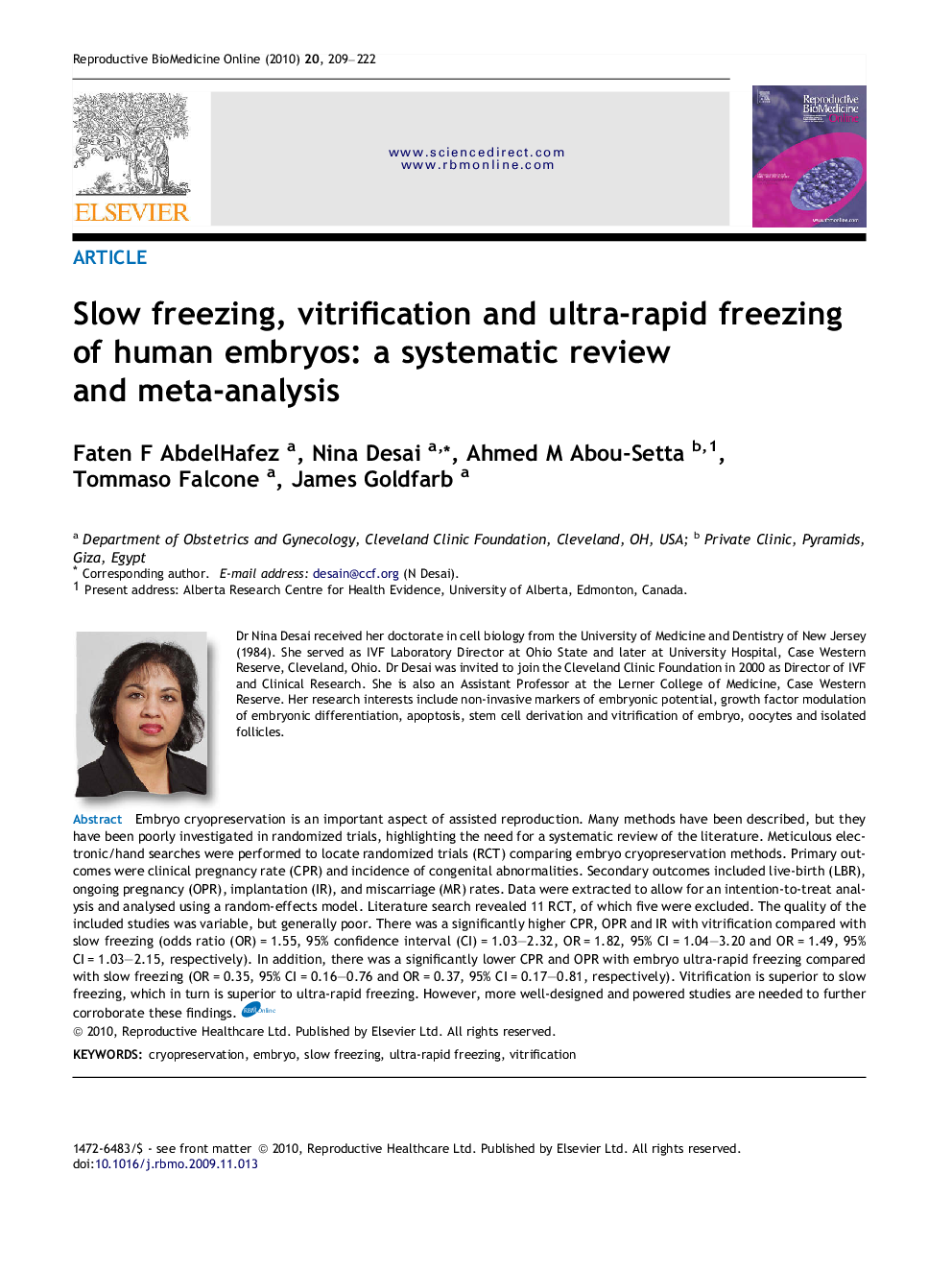| Article ID | Journal | Published Year | Pages | File Type |
|---|---|---|---|---|
| 3971009 | Reproductive BioMedicine Online | 2010 | 14 Pages |
Embryo cryopreservation is an important aspect of assisted reproduction. Many methods have been described, but they have been poorly investigated in randomized trials, highlighting the need for a systematic review of the literature. Meticulous electronic/hand searches were performed to locate randomized trials (RCT) comparing embryo cryopreservation methods. Primary outcomes were clinical pregnancy rate (CPR) and incidence of congenital abnormalities. Secondary outcomes included live-birth (LBR), ongoing pregnancy (OPR), implantation (IR), and miscarriage (MR) rates. Data were extracted to allow for an intention-to-treat analysis and analysed using a random-effects model. Literature search revealed 11 RCT, of which five were excluded. The quality of the included studies was variable, but generally poor. There was a significantly higher CPR, OPR and IR with vitrification compared with slow freezing (odds ratio (OR) = 1.55, 95% confidence interval (CI) = 1.03–2.32, OR = 1.82, 95% CI = 1.04–3.20 and OR = 1.49, 95% CI = 1.03–2.15, respectively). In addition, there was a significantly lower CPR and OPR with embryo ultra-rapid freezing compared with slow freezing (OR = 0.35, 95% CI = 0.16–0.76 and OR = 0.37, 95% CI = 0.17–0.81, respectively). Vitrification is superior to slow freezing, which in turn is superior to ultra-rapid freezing. However, more well-designed and powered studies are needed to further corroborate these findings.
